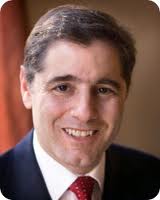FCC and FDA will knock heads together on wireless medicine


The news came in the form of a Memorandum of Understanding signed by FCC chair Julius Genachowski (right) and FDA administrator Margaret Hamburg.
The move comes less than a week after health IT won $400 million in subsidies aimed at improving rural hospital broadband. Over the last few years health IT has become a key driver of WiFi, the use of unlicensed frequencies to deliver broadband.
The biggest problem right now is a dispute between health IT and aeronautics companies like Boeing 10 MHz of spectrum below the WiFi spectrum, which health IT players like Philips want to use for Medical Body Area Networks (MBANs), with 20 milliwatts being enough power to connect monitors worn on the body with the Internet. Boeing insists this will create interference with airplane telemetry.
Genachowski and Hamburg made their statement the same day they toured a showcase of wireless medical solutions with U.S. CTO Aneesh Chopra. The West Wireless Health Institute, which we have covered extensively here, sent out a wildly enthusiastic press release.
This kind of effort is right up WWHI's street. It has the money and industry clout to represent the need credibly before Washington policymakers, and the independence to be seen as an honest broker among the medical players.
What will follow will be a series of negotiations among the parties, aimed at finding a solution both military and civilian planners can accept, then a rule-making that could be complete in about a year.